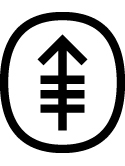The effects of endobronchial cuff inflation on double-lumen endobronchial tube movement after lateral decubitus positioning Journal Article
| Authors: | Desiderio, D. P.; Burt, M.; Kolker, A. C.; Fischer, M. E.; Reinsel, R.; Wilson, R. S. |
| Article Title: | The effects of endobronchial cuff inflation on double-lumen endobronchial tube movement after lateral decubitus positioning |
| Abstract: | Object: This study was designed to measure changes in tracheal and bronchial lumen distances from mainstem and secondary carina with lateral positioning, and to assess whether inflation of the endobronchial cuff before lateral positioning would further secure a double-lumen endobronchial tube (DLT) and reduce movement. Design: Prospective study. Setting: University- affiliated cancer center. Participants: Fifty adult patients scheduled for elective thoracic surgical procedures requiring the placement of a left DLT. Interventions: Patients were sequentially assigned to either the endobronchial cuff-inflated group or the deflated group during lateral positioning. After induction of general anesthesia, a left polyvinylchloride (PVC) DLT was placed and the position confirmed. In the supine position, the distance from the tip of the tracheal lumen to main carina was measured using a fiberoptic bronchoscope (FOB) passed through the tracheal lumen, and the distance from the bronchial lumen to secondary carina was measured with the FOB passed through the bronchial lumen: The patients were then positioned laterally and a second set of measurements taken. Overall movement was determined by increases and decreases in tracheal and bronchial distances obtained by subtracting supine values from lateral values. Measurements and Main Results: There was significant tracheal movement in 40 of 50 patients, with a mean of 0.92 ± 1.0 cm. This was predominantly in the upward direction, as seen in 35 of 50 patients. There was significant bronchial movement in 37 of 50 patients, with a mean of 0.92 ± 1.15 cm. Also, predominance in the upward direction was seen in 34 of 50 patients. Conclusions: DLTs move with lateral positioning, regardless of endobronchial cuff inflation. The movement is predominantly in the upward direction. Therefore, fiberoptic visualization in the supine position should be used only to confirm that the endobronchial lumen is placed on the appropriate side and the cuff is at least 1 cm inside the left mainstem bronchus. Final positioning should always be verified in the lateral position. |
| Keywords: | adult; child; clinical article; aged; middle aged; clinical trial; prospective studies; bronchus; posture; bronchi; movement; fiberoptic bronchoscopy; intubation, intratracheal; anesthesia complication; body position; humans; human; female; priority journal; article; dlt movement; double-lumen endobronchial tube; thoracic anesthesia; endobronchial intubation; endotracheal cuff |
| Journal Title: | Journal of Cardiothoracic and Vascular Anesthesia |
| Volume: | 11 |
| Issue: | 5 |
| ISSN: | 1053-0770 |
| Publisher: | Elsevier Inc. |
| Date Published: | 1997-08-01 |
| Start Page: | 595 |
| End Page: | 598 |
| Language: | English |
| DOI: | 10.1016/s1053-0770(97)90011-2 |
| PUBMED: | 9263092 |
| PROVIDER: | scopus |
| DOI/URL: | |
| Notes: | Article -- Export Date: 17 March 2017 -- Source: Scopus |
Altmetric
Citation Impact
BMJ Impact Analytics
Related MSK Work







